Cycling made Simple.
Made By Cyclists

Trek Alpha 1.1 Review
November 18, 2022

Key Takeaways
- The Alpha 1.1 was an entry-level road bike built from 2011 - 17.
- Trek Bicycle Corporation is headquartered in Waterloo, Wis.
- The Trek Alpha 1.1 was one of the best values for the money.
This article may contain affiliate links where we earn a commission from qualifying purchases.
One of the best entry-level bikes that Trek ever made was the Alpha 1.1. Even though Trek no longer produces this gem, the bike still has plenty to offer.
Made from 2011 - 2017, the Trek Alpha 1.1 sought to attract a new generation of riders to the love of cycling. The Alpha was the least expensive of the Trek lineup, which helped it achieve a reputation for being a great value. The bike was known for being lightweight, fast, and very durable.
Battling years of negative press, Trek Bicycle Corporation found itself in full-blown damage control in early 2010. Their alleged involvement in doping plagued them (which their team leader, Lance Armstrong, admitted to using a couple of years later), coupled with a very public lawsuit over the leadership of Lemond Cycles had left a sour taste in the hearts of the public. To counter its tarnished public image, Trek introduced an entry-level bicycle to try and attract new riders. Their mission was to produce a higher quality road racer without the expensive price tag. So, to accomplish this task, Trek applied its research data and design experience to the task and worked with its far eastern counterparts to produce a lightweight, durable bike that could go very fast.
TABLE OF CONTENTS
What’s So Special about the Trek Alpha 1.1?
The Trek Alpha is now only available used, mainly on eBay or with some bike dealers who have a good consignment program.
The Alpha 1.1 was a Quality Build.
Even though the 1.1 was designed at Waterloo, Wisc (where Trek headquarters are located), the bike was not assembled inside the US. While many Americans prefer items produced in the good old US of A, the fact that Trek continued to use its factories in China and elsewhere isn’t necessarily wrong.
For years, Trek had depended on these builders to consistently produce many high-end premium road racers. Using these same workers meant that the bikes would likely show a high degree of excellence, precisely what Trek needed to combat an increasingly agitated riding community.
The frame was made from aluminum tubing with an attractive glossy finish. Even though carbon fiber was becoming all the rage for high-end performance bicycles, aluminum was a much cheaper resource. The primary benefit of an aluminum frame is that it provides excellent strength qualities while at the same time costing less, meaning that the bicycle price can be contained. Trek used its extensive racing research to push the aluminum frame to the limit, keeping the weight down while still holding onto the structural rigidity needed for most riders.
The folks at Trek must have felt pretty good about the frame because they offered a lifetime warranty with every purchase, which was virtually unheard of at the time.
The Trek Alpha 1.1 utilized the traditional H2 top-tube sloping, which is supposed to be the optimal riding position (according to Trek’s research). The steep upright angle of the tube enhances the rider's overall comfort, making it easier for cyclists to stay on task and enjoy the ride. The designers knew that the more comfortable the ride, the longer a cyclist would stay on their bike, which is precisely what the company wanted. The design shows how committed Trek folks were to fashioning a bike to appeal to a wide range of buyers.
Shimano Claris shifters and derailleurs provide the effective movement of gears when needed. Most bike reviews indicate the ride is soft, with no issues moving up and down hills through the gear ratios. While the eight gears might have been less than a professional racer would use, it is more than adequate for normal cycling. (The aluminum frame adds extra weight that might create issues for riders attacking inclines).
The wheels are Bontrager AT-750 double-walled alloy rims with 700c x 25 tires. The narrow tires lend themselves to increased speed and reliable handling when navigating corners.
Interestingly enough, the Bontrager is Trek’s primary tire supplier, and the tire is manufactured in Waterloo, Wisc. The Alpha 1.1 also has room for wider tires for additional grip on wet or muddy surfaces. There is also room for a rear rack or mudguards should their installation be necessary.
The shifter and rear brake cables are run alongside the downtube and provide effective braking and shifting. Most professional bikes run the cables inside the center tube to minimize wind drag and increase aerodynamics. However, the Alpha 1.1 seems content to run the brakes alongside the tubing rather than inside. (My preference is inside the tubing, as an integrated cable system, but this requires additional attention during the manufacturing process and increases the cost). Trek went with a parallel cable system to save dollars during the manufacturing process, and this is a win for the casual rider, who isn’t worried about shaving second off a stage time.
The seat is also a Bontrager Affinity which is soft enough to add comfort without discomfort on longer rides.
The Alpha 1.1 was the Least Expensive Bike Trek Made.
When it was introduced, the Alpha 1.1 was offered as the best value in bikes. Trek saw a need to create a market for new riders. By keeping the manufacturing costs to a minimum (including cheaper labor costs overseas), the company decided to pass those savings along to potential buyers.
The bike was priced well below the $500 mark, which made it easily affordable for most families. Now, the average American who felt the urge to channel their inner Lance Armstrong could have a bike similar to the Trek-Segafredo pro team used.
The Alpa 1.1 Performed Very Well
It didn’t take long for the researcher of the Alpha to discover that those who purchased the bike and rode it loved it. The reviews recognize that the short wheelbase made for a bike that was quick enough to chew up the pavement, handle well while cornering, and stay in control on the wet or less-than-perfect pavement.
The earliest renditions of the Alpha 1.1 had an aluminum fork and frame that tended not to dampen the bumps and jolts of imperfect road surfaces. While carbon forks and frames do a better job smoothing out the pavement, this complaint was not enough to make riders consider other models or take the Alpha off their list. However, the later model year Alpha (2017) shows a Trek carbon fork, which helped with some of the complaints about the ride. (Again, my preference here is to have an adjustable fork that allows the rider to quickly switch to suspension settings to handle rougher terrain, but this was something the folks at Trek were unwilling to do on their early road racers).
There have been some complaints as to the weight of the bike, but these were primarily complaints by riders who were used to riding a carbon-fiber frame. For these riders, the bike’s ride might seem chunky, particularly on steep inclines, where the additional weight can quickly come into play. Even though the bike may be harder to move uphill than other competing road bikes, the ride is just about what you might expect for its price point.
Why Did Trek Stop Making the Alpha 1.1?
For several years, the Trek Alpha 1.1 was a trendy bike for the company. Still, unfortunately, after the initial excitement for the bike wore off, Trek realized that buyers were flocking to other competitors producing better bikes. The emergence of smaller bike companies pushed Trek to drop Alpha 1.1 in favor of other lines, such as the FX series or the Emonda lineup.
At about the same time, Trek and Segafredo partnered to sponsor an International Racing Team. In 2022, the team has over 31 riders on the men’s side and 14 riders on the women's. The teams dominate the racing circuit and are almost always on the leaderboards.
Where Can I Purchase an Alpha 1.1?
Even though Trek still carries an image of the 1.1 on its website, the bike is not available to be shipped from the company. The only way to secure an Alpha 1.1 is through eBay, or another online site selling used bikes.
- A very reasonably priced entry-level bike
- The bike is well-made, with a lot of research behind it
- The company has an incredible resume in road racing
- Aluminum frame holds up well
- Perfect looking bike.
- No longer being made
- Trek losing ground to other competitors
- Click on Ebay to find out the latest price.
What kind of Bikes is Trek Making Now?
Even though Trek no longer produces the Alpha 1.1, the company still has a wide selection of bicycles for every discipline. The company makes a Marlin series, an excellent beginner bike for mountain and trail riding. Trek suggests the Edmonda series or the FX-1 for an entry-level bike for road riding. Trek also has a large selection of electric bikes. The FX+ is priced at around $2500, while the Domaine+ SLR retails for around $8500. which are not cheap but are great rides nonetheless. Here are some of our recommendations for the best bikes for entry-level riders in the Trek lineup.
- Entry Level Road/City Bike - FX 1
- Mountain Bike - Marlin 7
- Electric Bike - FX+
- Boy’s Bike - Roscoe 20
- Girl’s Bike - Wahoo 24
For more information on Trek bicycles, see the manufacturer’s website.

Why Road Cyclists Are Switching to Gravel Bikes

Why Fitness Enthusiasts Are Switching to Smart Cycling Trainers

Why Competitive Cyclists Are Switching to Aero Road Bikes

Why Eco-Conscious Riders Are Switching to Bamboo Bikes
About THE AUTHOR

Danny Lawson
Mountain biking is more than just a hobby for me - it's a way of life. I love the challenge and excitement that comes with it, and I'm always pushing myself to go faster and ride harder. Some people might think that mountain biking is dangerous, but I see it as the only way to live.
Trending Now

Why City Dwellers Are Switching to Folding Bikes

Why Budget-Conscious Riders Are Switching to Co-op Bike Brands

Why Mountain Bikers Are Switching to Fat Tire Bikes

Why Urban Commuters Are Switching to Electric Bikes

About PedalChef
PedalChef is a blog on all things cycling. We are a group of people who love bikes, and we want to share the joy that comes with the experience. You can read more about us here .

©2024 PedalChef. All rights reserved.
We can be reached at [email protected]
PedalChef.com is a participant in the Amazon Services LLC Associates Program, an affiliate advertising program designed to provide a means for sites to earn advertising fees by advertising and linking to Amazon. This site also participates in other affiliate programs, and is compensated for referring traffic and business to these companies.
Trek 1.1 review
The Trek 1.1 is Trek's bottom rung road bike, but that doesn't mean budget ride quality
- Sign up to our newsletter Newsletter

The Trek 1.1 has got plenty of great features to like. It's a comfortable alloy frame with a carbon fork and it's versatile thanks to the pannier mounts. If you can look past the weight and the iffy brakes this would be a great bike for new riders or those wanting to start commuting to the office.
Comfortable ride
Carbon fork
Tubeless ready wheels
Pannier rack/mudguard compatible
Brakes could be better
You can trust Cycling Weekly. Our team of experts put in hard miles testing cycling tech and will always share honest, unbiased advice to help you choose. Find out more about how we test.
At £625, the Trek 1.1, alongside the Trek Lexa 2, occupies the lowest level of Trek’s bike roster. But, for its diminutive status, it delivers a tidy ride that’d definitely be befitting a beginner rider.
Buy now: Trek 1.1 at Evans Cycles for £625
Despite occupying the lower rungs of Trek’s hierarchy, the 1.1 is still given that distinctively Trek sloping top tube boasting Trek’s H2 fit system, a feature that the brand believes to be the optimum on bike position.
>>> Best cheap bikes under £1000: bikes from £260 ridden and rated
According to the company, it’s a feature that travels right to the top, with Trek-Segafredo riders also using the same fit system to get their race machines right.

In real life, it’s certainly not uncomfortable, and the soft bend in the arms is comfortable enough for extended rides at least, and the size 56cm fit my 5,11 frame comfortably.
The frame itself is made from 100 series Alpha Aluminium, which happily brings a balance between comfort and weight. Meanwhile, the carbon fork helps eliminate road buzz and keep the weight down as much as possible.
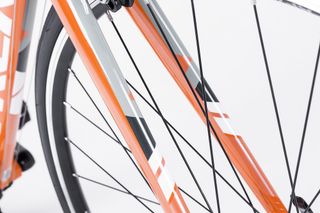
Other neat touches include the mounts for pannier racks as well as mudguard compatibility, which definitely helps make this a truly versatile machine, whether you want to go far or just commute to the office.
Specification
As an entry-level bike, you’re naturally looking at some entry level components, and the Trek 1.1 doesn’t come flashing the sportiest of gear, but happily, it all functions well.
The 1.1’s drivechain is a bit of a mish mash of parts. Shimano Claris takes care of shifting, with its Claris range making up the shifters as well as both front and rear derailleurs. The crankset and cassette meanwhile are outsourced to Vuelta Corsa and Sunrace respectively. No doubt to keep costs down.

The Claris shifting performed well, as you’d expect from a low-end groupset from Shimano – a company that traditionally does budget very well.
>>> Shimano, SRAM and Campagnolo groupsets explained
However, the performance of the brakes was less inspiring. They will stop you eventually, but they’re not the most effective. Mix in a grabby, stiff action and they're not the most confident inspiring.
Elsewhere, the Bontrager AT-750 wheels felt bombproof, and they're tubeless ready. The 25mm rubber they’re shod with are also a welcome touch, adding comfort to the ride, although these aren't tubeless ready so you'll have to upgrade if you want to go down that route.
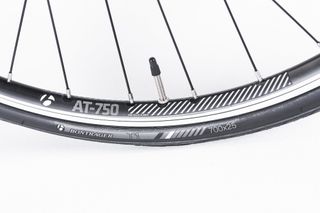
The rest of the finishing kit is made up of Bontrager’s in house parts, all of which did the job well. Up front the Bontrage Race handlebar brings some serious width to the front end, which won't be to everyones preferences, but new riders will enjoy the added comfort.
The ride quality of the Trek 1.1 is on point for its price. The aluminium frame irons out the bumps in the road, while the carbon fork evens out any jarring hand buzz, making for a very comfortable ride.
The upright position definitely helps here, and the wide bars help keep your arms in a comfortable position while holding your shoulders in a sustainable position. Its large looking frame is also dead stable at speed. it's comforting to ride, at no point feeling jittery or nervous.
Watch: Handlebar height and reach – how to get them right
Of course, such levels of stability can often mean a diminishment in mobility, and the Trek 1.1 is not an agile bike likely to make fast turns or whip around road furniture. At this level though, it’s a sacrifice I’m willing to make for the level of comfort on offer from the bike.
This size and stability does mean that the Trek 1.1 comes with a weight penalty, and at 9.33kg it is a bit of a beast to haul up and over those hills. Helpfully, the compact chainset (50/34 configuration) coupled with the 11-28, 8 speed cassette on the back makes getting up those inclines just that little bit easier.
>>> How to ride faster up short, steep hills (video)
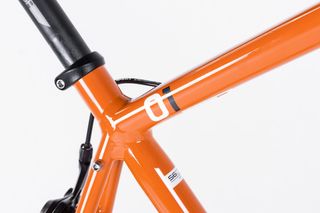
Matching the Trek 1.1 against other major cycling retailers reveals that it’s not too far off the money in terms of its spec.
Giant’s entry level machine, the Contend 2, costs £50 less but comes with the same, Shimano Claris drivechain, and configuration of own brand finishing kit. Although on the Trek you are getting a carbon fork.
Both companies are put in the shade by B’Twin though, which offers its Triban 540 road bike for £650, equipped with a carbon fork and Shimano 105 , a higher end groupset.
Thank you for reading 20 articles this month* Join now for unlimited access
Enjoy your first month for just £1 / $1 / €1
*Read 5 free articles per month without a subscription
Join now for unlimited access
Try first month for just £1 / $1 / €1
Get The Leadout Newsletter
The latest race content, interviews, features, reviews and expert buying guides, direct to your inbox!

Former world champion forced to settle for third on the podium behind Van der Poel and Jasper Philipsen
By Tom Thewlis Published 7 April 24

British rider was unable to grip his handlebars properly in the finale as the last cobbled sectors arrived

The world champion launched his race winning move on the Orchie cobbled sector, almost 60 kilometres from the Roubaix velodrome
Useful links
- Tour de France
- Giro d'Italia
- Vuelta a España
Buyer's Guides
- Best road bikes
- Best gravel bikes
- Best smart turbo trainers
- Best cycling computers
- Editor's Choice
- Bike Reviews
- Component Reviews
- Clothing Reviews
- Contact Future's experts
- Terms and conditions
- Privacy policy
- Cookies policy
- Advertise with us
Cycling Weekly is part of Future plc, an international media group and leading digital publisher. Visit our corporate site . © Future Publishing Limited Quay House, The Ambury, Bath BA1 1UA. All rights reserved. England and Wales company registration number 2008885.
- MAGAZINE OFFERS
- BIKE INSURANCE
- Best Products
- Maintenance
- Accessories
- Long-Term Reviews
- BikeRadar Podcast
- First Look Friday
- Bike of the Week
- Tech Features
- Routes and Rides
- Bike Galleries
- BikeRadar Bargains
- Buyer's Guides
- Fitness & Training
- Sizing & Fit
- Mountain Biking UK
Cycling Plus
Trek 1.1 review
Dependable road ride
Russell Burton

Trek have brought their experience to bear on the 1.1, producing an excellent budget-priced racer. Its short wheelbase makes it a fast, fun bike to ride and even with an aluminium rather than carbon fibre fork, it's a far from harsh ride.
- Frame: Trek Alpha Aluminium frame and aluminium fork in a good looking glossy finish. Has mudguard eyelets and clearance, and mounts for a rear rack increase versatility (8/10)
- Handling: The short wheelbase and light weight make this a nimble beast with fast but not twitchy handling (8/10)
- Equipment: Shimano 2300 combined with an FSA Tempo compact chainset and loads of solid, functional kit from Trek-owned Bontrager (7/10)
- Wheels: Bontrager tyres, Bonty-approved rims and 23mm tyres form a fairly lightweight wheelset for the price (8/10)
The Trek 1.1 has American pedigree and Far Eastern manufacturing skills behind it, with the chassis sporting a ‘Designed in Waterloo, Wisconsin’ label and the large welds typical of Taiwanese frames, with a bold, bright, tough-looking paintjob. Trek clearly have confidence in their products too, as the 1.1 comes with a lifetime guarantee.
There’s no carbon fork, with aluminium doing the job instead – and a very good one too. Though Lance Armstrong’s name is closely associated with Trek, the 1.1 isn’t purely a race machine. It comes with 23mm tyres, but there’s room to fit wider rubber or a set of mudguards. There are also mounts for a rear rack and eyelets for front and rear ’guards, adding to its year-long, all-rounder status.
The components are mainly Shimano 2300 and Bontrager. Levers and both mechs are Shimano, with Bonty in charge of handlebar and tape, stem, seatpost and tyres. The chainset is FSA’s compact Tempo, a 50/34T setup paired with a Sun Race 12-25 cassette. The resulting 37-113in range might be a little narrow for some.
Less keen climbers or those returning to cycling might appreciate a lower bottom gear for tackling severe climbs more comfortably, while the top gear won't please power pedallers. It’s a pity that a triple isn’t offered as an option. The Trek has quite a short wheelbase which contributes to some sharp handling, though some toe overlap could result.
Neither the fork nor the seatpost is carbon, but we still found this a comfortable ride. It’s quite compact, which helps take the sting out of poorer road surfaces, and this combined with its decent weight means it’s one you could tackle sportives on. The wheels are conventional 32-spoke designs with Bontrager semi-deep section rims, paired with 23mm Bontrager tyres, which we liked.
It’s hard to see how you could significantly improve the Trek 1.1. True, a carbon fork would be nice and trim a little more weight, but this is so well designed that you don’t really notice its absence. And some might prefer a wider gear range. But it’s well made, looks great, and you can see why the 1.1 has proved so popular. It might not make you the new Lance Armstrong, but you’ll have no reason not to get out and ride.
Share this article
Britain's Best Selling Road Cycling Magazine

- Terms & Conditions
- Subscribe to our magazines
- Manage preferences

How The Trek 1.1 Became A Super Affordable Entry-Level Road Bike
Table of Contents
- Price: $769
- Weight:10.0 kg
- Fork: Carbon
- Frame: Aluminium
- Wheels: 700c
- Drivetrain: 2 × 8
- Groupset: Claris
- Brakes: Rim
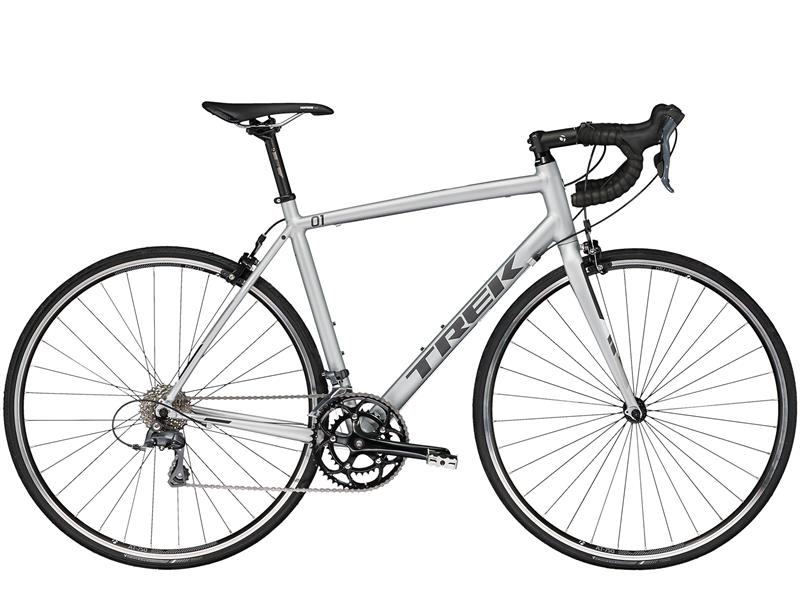
What we like about it: Fast, positive, confidence-inspiring, and fun. During the ride, I noticed less vibration transmitted through the forks into the handlebars, making it more enjoyable. The brakes worked well and required little effort to slow or stop the bike.
What we don’t like about it: Uncomfortable seat. My stock saddle has been replaced with one that is a bit more comfortable.
Trek uses the geometry that has been tested on the Pro Tour on every Trek road bike.
Buying a Trek 1.1 is choosing the most cost-effective ride quality! Performance = Ride Quality! It doesn’t matter what kind of kit is on the bike, the Trek 1.1 you pay for the same price is definitely more effortless and quicker to ride than any other brand of road bike in the same price range.
The Trek 1.1 aluminum road bike has the same aerodynamic shape and detailing as a high-end bike. The Trek 1.1 is sturdy, lightweight, and designed for zipping down the road.
With so many compliments, you can’t wait to learn about it, let’s get to know Trek 1.1 with our testers.
Main Features
Frame(4.6/5).
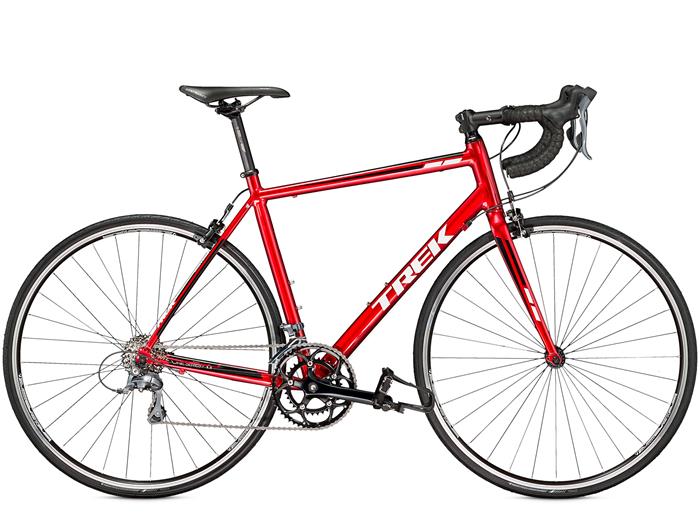
Aluminum alloy frames and components have been used throughout most of the history of the bicycle industry, but this does not mean that there is no possibility of continuous improvement and improvement.
For the Alpha Aluminum, Trek took the most complex metallurgy and pushed it to the limit—creating a strong, lightweight frame that delivers a riding experience that rivals many carbon frames.
The Trek 1.1 builds the frame with an Alpha Aluminum 100 Series for a more compliant frame, allowing the Trek 1.1 to maintain gold-hot acceleration performance at an affordable price.
With an Alpha Aluminum frame, you don’t have to think twice about hitting gravel trails or doing multi-day trips.
The Trek 1.1 will be an excellent companion for your vacation, travel, training, and competition.
The Trek 1.1’s Alpha Aluminum 100 Series frame features front and rear fender mounts designed for riders to ride in the rain and mud.
Geometry(4.7/5)
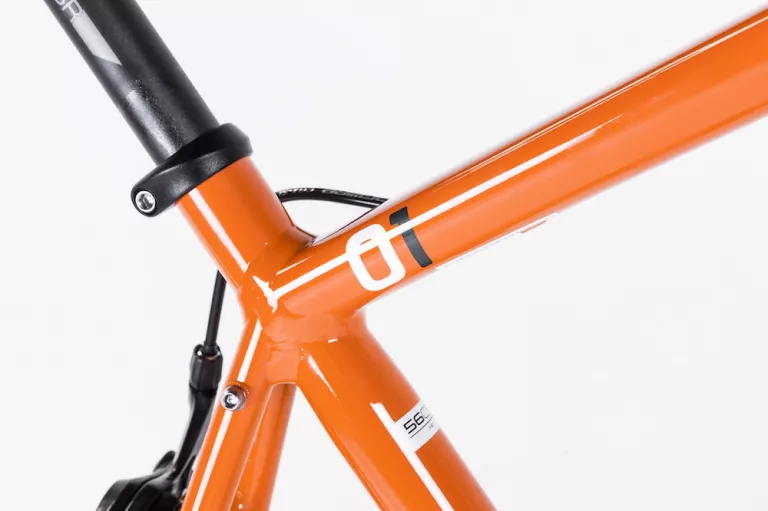
In Trek’s frame geometry, it is divided into “H1” and “H2”.
The H1 frame has a lower head tube and longer reach; the H2 frame has a higher head tube and a deeper depth.
Simply put, the H1 is suitable for aggressive riding positions, and the H2 is suitable for relatively comfortable, or durable riding positions.
Therefore, Trek 1.1 can also see its design logic with H2 geometry.
Components and Specifications
Drivetrain(4.5/5).
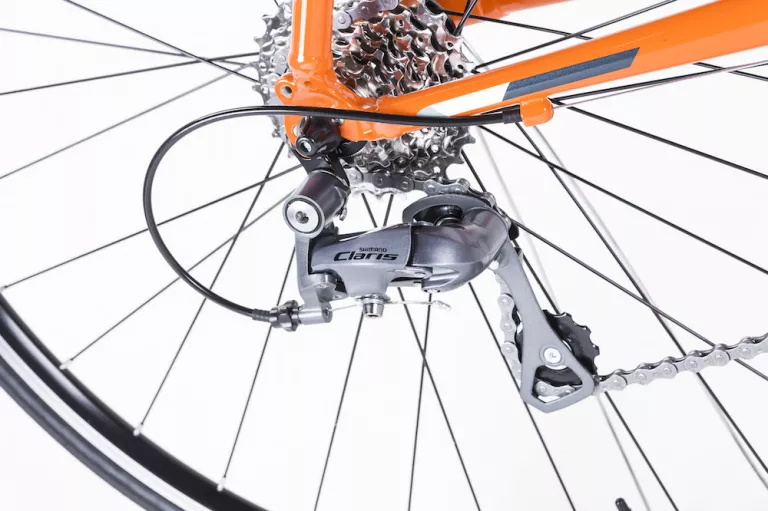
Trek 1.1 shifters use Shimano Claris, 8 speed, and both front and rear derailleurs use Shimano Claris.
Trek 1.1 Shimano Claris, 8-speed shifter Feel comfortable, ergonomically shaped, and with 2×8 speed road drivetrain compatibility, Shimano Claris dual levers provide accurate shifting and confident braking.
In our testers’ eyes, the durable and low-maintenance 8-speed drivetrain gives you the best gear range on a Trek 1.1 road bike.
Simple and intuitive dual control levers provide the Trek 1.1 with a comfortable ride.
Front and rear derailleurs
Our testers found the Shimano Claris rear derailleur on the Trek 1.1 to be a highlight.
Especially when shifting along with the flywheel into a more difficult-to-adjust gear during shifting, the shifting can also be precise and relatively sensitive.
When you and your buddies are conquering a steep hill or sprinting, it works perfectly under that load.
If you take these things into consideration, you’re in awe of the fact that the Trek 1.1 has a Shimano Claris rear derailleur.
One thing our testers also mentioned, however, is that we all know that the Shimano Claris is an 8-speed system, and the chain jumps between the gears a bit.
This puts pressure on the rear derailleur, and the details of smooth shifting are also something we need to pay attention to.
Dropping the chain from the large ring of the sprocket to the small ring is easy, but the reverse is not the same thing.
The Shimano Claris front derailleur pull-arm is much shorter than Shimano’s other pricier series. Our testers felt that it took a lot of effort to keep pushing the front derailleur to make a sustained shift.
It’s not a big problem, but in case of rain or cold winter weather, your fingers may not be able to control it very flexibly.
Trek 1.1 cranks are Vuelta Corsa, 50/34 (compact). Vuelta Corsa, 50/34 (compact) cranks are cold-forged and have a durable coating.
Chainrings with 110mm BCD compact steel. Gearing of 50T/34T, designed for indexed shifting. Shimano M371 cranks have good rigidity, durability, and lubrication after testing.
This product definitely met our testers’ expectations. Vuelta Corsa, 50/34 (compact) is also cheap.
The Trek 1.1 has a sprocket range of 11-28T, and the individual sprockets are precisely positioned relative to each other, ensuring the chain moves smoothly between the gears.
The Trek 1.1 uses a Sun Race CSR86, 8-speed cassette, and a net weight of 235 grams, which is very light.
In the eyes of our testers, the Sun Race brand cassette looked better than Shimano’s.
The Sun Race CSR86, 11-28, 8-speed shifts quickly and smoothly.
When we tested it violently, it was found that there was no excessive wear, which was also due to the good nickel-plated protective layer on the surface.
Pedals(4.4/5)
The Trek 1.1 pedals feature nylon composite treads, and the pedals themselves are fairly large.
The whole tread feels very comfortable. Nylon pedals are better than alloy pedals in terms of durability, more wear-resistant, and are less prone to deformation.
Fork (4.3/5)
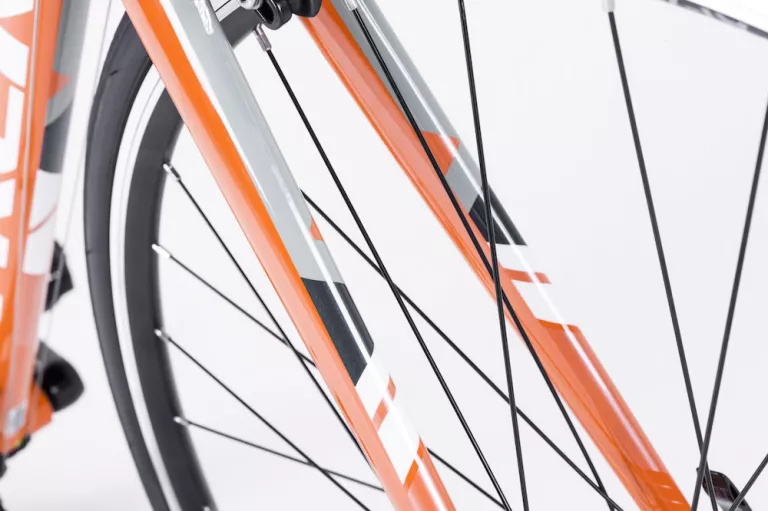
Carbon fiber not only has the inherent characteristics of carbon materials but also has the soft processing properties of textile fibers. Its specific gravity is less than 1/4 that of steel, but its strength is very high, and its corrosion resistance is excellent.
The Trek 1.1 front fork uses a Trek carbon fiber road fork, which reduces the weight of the entire vehicle and can indirectly increase the speed. Moreover, the carbon fiber front fork has good elasticity and can absorb more vibrations from the ground.
Bottom Bracket(4.5/5)
Generally, cartridge bottom brackets have two main components. The cartridge itself consists of the sealed bearings and spindle and is usually threaded into your frame’s right (drive side). The lockring is threaded into the left (or non-drive) side of the frame, and it supports the opposite end of the cartridge.
Bottom brackets should be installed and left alone. A sealed unit is what’s popular because it does not require maintenance.
Headset(4.6/5)
Trek 1.1 only a small section of the headset can be seen from the appearance, and the size of the frame pipe diameter will be larger to cover the entire set of internal parts.
In addition, the lower bearing of the hidden head bowl needs to be selected according to the angle of the front fork.
The Trek 1.1 uses a headset with 1-1/8″ integrated, semi-cartridge bearings.
This headset is made from a quality aluminum alloy material that is anti-rust, sturdy, and durable. Fine machining ensures a sleek surface, and the headset fits perfectly.
Dust and water can be kept away by the cap thus extending the life of the device. Using this bicycle headset, you can prevent the bearing from over-abrasion and allow it to rotate freely.
The Trek 1.2 and Trek X-Caliber 6 use the same headset as the Trek 1.1.
Wheels(4.3/5)

Trek 1.1 wheels feature Alloy hubs; Bontrager AT-750 double-walled alloy rims.
The Bontrager AT-750 rims used on the Trek 1.1 are dual-wall rims. Bontrager AT-750 double-walled alloy rims generally have the best strength-to-weight ratio.
You’ll find it on most intermediate to pro-level bikes.
They have a huge performance advantage over single-wall rims, which our testers recommend for any level of riding.
The Trek 1.1 front and rear hubs use Alloy. The hub can be said to be the core component of the wheelset.
When you decide to build a wheelset, basically everyone will start with the hub to choose from.
Alloy’s focus is on smooth rolling and minimal loss of power. Trek 1.1 front and rear hubs are made of aluminum alloy.
The surface of aluminum is anodized, by immersing aluminum in a special solution, and then through a series of chemical reactions such as the electrolysis of water, a dense and solid oxide layer is formed on the aluminum.
The Trek 1.1 uses Bontrager T1, 700x25c tires with a super-strong nylon shell, 700mm outer diameter, and 25mm width.
The tire has an engineered tread design for confidence in wet or dry conditions.
The Bontrager T1 tread uses a durable compound for longer life. Our tester had a Trek 1.2 in hand, and the Bontrager T1 has always been our tester’s stock tire.
In addition to a flat tire, he ran 4,000 miles when he hit a chunk of steel, puncturing the tire and tube. Our testers patched the tubes and re-used the tires and are still using Bontrager T1 tires.
This shows how well the Bontrager T1 is used by our testers!
Trek 1.1 Spece
1. On this bike, what is the largest tyre size I can fit (in mm, e.g. 700x25C)?
Bontrager’s 700 x 25c tire is the largest tire we recommend for the 1.1.
2. Is there a way to find the serial number on my bike?
Located beneath your cranks, your serial number begins with the letters “WTU” followed by a string of numbers and letters.
3. What is the number of gears on Trek 1. 1?
4. Can you tell me how much this bike weighs?
There is no need to worry about shipping since the 56 cm Domane AL 2 weighs 9.92 kg / 21.87 lbs.
Comparison table
Schwinn vantage f2 700c vs trek 1.1.

The Schwinn Vantage F2 700c is about $170 more expensive than the Trek 1.1.
The positioning of the two road cars is also different. The Schwinn Vantage F2 700c is more suitable for healthy riding, and many people will choose to ride the Schwinn Vantage F2 700c in their spare time to relieve stress. ( Who Are The People Who Still Insist On Cycling In The Summer? -Interesting Cycling Facts ) And Trek 1.1 is better for speed racing.
The Schwinn Vantage F2 700c fork is aluminum, and the Trek 1.1 is carbon fiber( Trek 1.2 fork also uses carbon fiber.).
As a racing car, Trek 1.1 chose a carbon fiber front fork, which is light in weight and strong in shock absorption.
Compared with carbon fiber, the aluminum alloy front fork has no advantage in weight, and the shock resistance is slightly weaker.
But for the Schwinn Vantage F2 700, which is usually used for healthy riding, it doesn’t matter much.
The Schwinn Vantage F2 700c uses a mechanical disc brake, which relies on the pull of the brake cable to rub the brake pads in the caliper and clamp the disc to produce a braking effect.
The disc brakes give me a solid feel, but I prefer, or rather get used to, the feedback I get from the pads hitting the rims on the Trek 1.1 rim brakes. And this kind of feedback is not found in the disc brake type.
Moreover, the rim brakes can also bring a light feel and good feedback when combined with excellent cable tubes and routing.
Acera, Tourney shifting kits are configured on the Schwinn Vantage F2 700c, which also reflects the positioning of the road bike – leisure, entertainment.
The Claris is one of the lower-end kits in Shimano’s lineup. It’s designed for light exercise, long rides, town cruising in casual clothing, shopping, and daily commutes.
But why use the Trek 1.1, a road bike positioned for speed competition? Our testers never understood the designer’s design logic.
Learn more: Schwinn 700c Prelude Road Bike Review
Fuji Jari 2.5 vs Trek 1.1
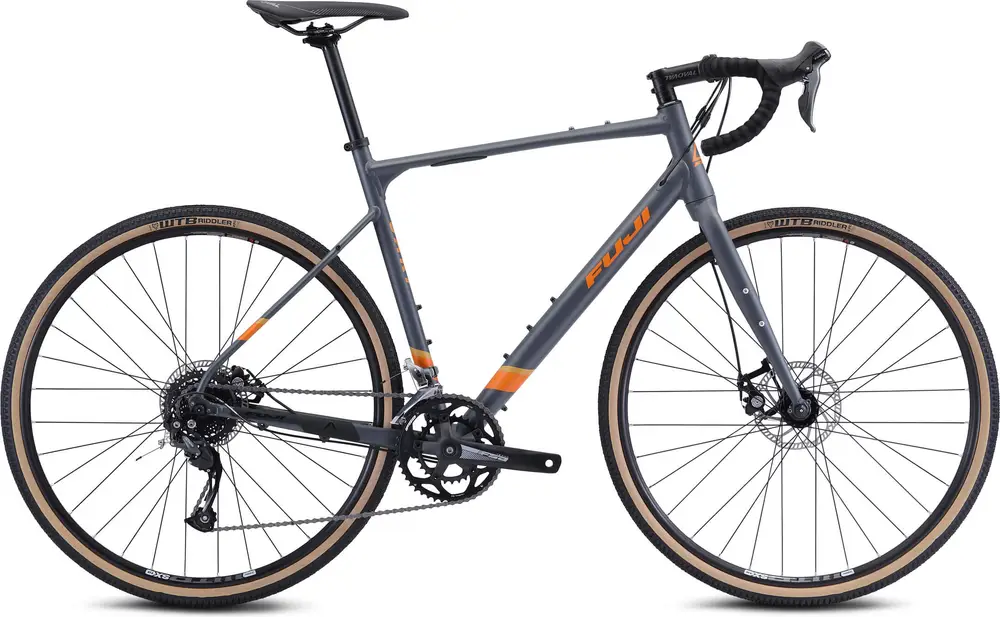
Unlike Trek 1.1, the Fuji Jari 2.5 is a bike that does a great job on gravel road bikes today.
The Fuji Jari 2.5 is equipped with a 1400-gram lightweight A6 aluminum alloy frame, but the surface of the Jari 2.5 only has a transparent coating material.
The Trek 1.1 has a carbon fiber fork, while the Fuji Jari 2.5 has a chrome-molybdenum fork.
The chrome-molybdenum steel frame is suitable for long-distance riding, especially long-distance road riding, which makes the Fuji Jari 2.5 very good for fine vibration damping on the road surface.
The chrome-molybdenum steel material itself is relatively elastic. When making the frame, because the material itself is better and more durable, the tube wall is usually thinner, resulting in greater elasticity.
The Fuji Jari 2.5 is not easy to get tired of riding, but the frame is soft, not suitable for competition, and not suitable for power.
Fuji’s exclusive parts manufacturer, Oval, specially designed the handlebar for the Jari Jari 2.5. It is made of 6061 aluminum alloy and has a drop distance of 125 mm between the upper and lower handlebars.
The handlebar position is quicker under normal riding posture, and it is also quite suitable for relatively small arms. People who are short or have a phobia of gripping.
There is a 25° flare angle in the lower handle position, which reduces wrist flexion in the lower handle position and reduces fatigue accumulation.
The Jari Jari 2.5 head tube angle ranges from 70.5° on the smallest frame size to 72° on the larger frame. The slack head tube angle is a setting biased towards gravel bikes. The chainstay length is 435mm for all frame sizes, which is 1cm longer than a typical cyclocross bike.
Vitus Razor vs Trek 1.1
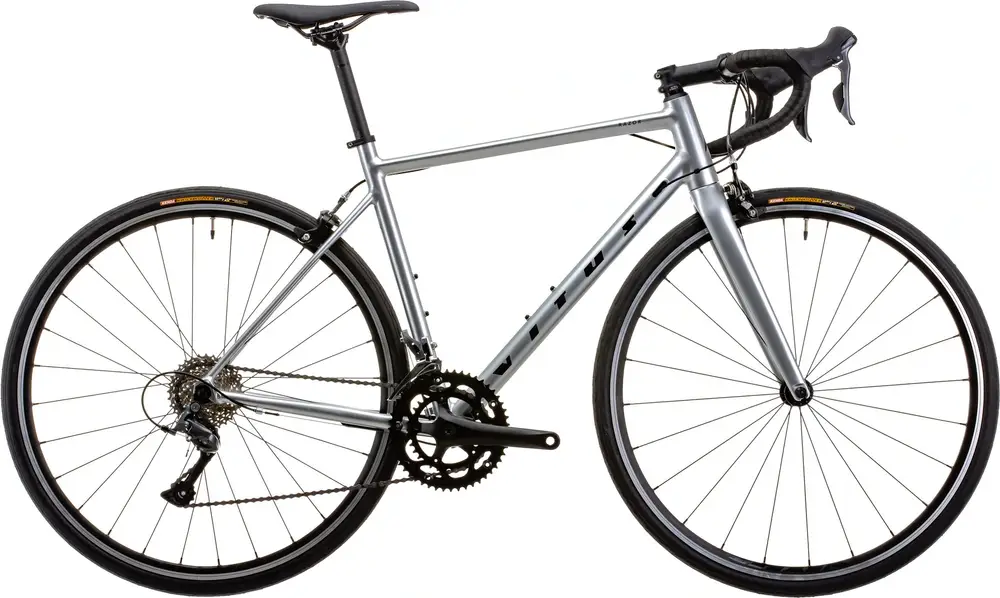
The Vitus Razor is 1.0 kg lighter than the Trek 1.1. Other than that, the two cars are roughly like twin sisters.
Featuring an all-new modern 6061-T6 Double Butted Aluminium frame and full UD T-700 carbon fork, the Razor features a tapered frame to give you lightweight, speed, handling, and The perfect balance of comfort.
The Vitus Razor is equipped with Shimano’s efficient and reliable Claris R2000 8-S drivetrain, while the Trek 1.1 is paired with a Shimano Claris drivetrain.
The Vitus Razor has Tektro R317 rim brakes and Vitus 700c road wheels with elegant-looking Vee Road Runner 700c x 28 tires for great performance and grip in all conditions.
The Trek 1.1 features Alloy dual-pivot braking, a dual-pivot design that enables a lightweight, compact, and durable braking system. Dual-pivot caliper brakes have come a long way in reducing tolerances and deflections as well as durability.
Trek 1.1 achieves firm and immediate braking response while ensuring longer life. In addition, the durability of the brake pads has been increased by 100%, helping Trek 1.1 to enjoy highly responsive braking for longer periods of time.
Cervélo Caledonia 105 vs Trek 1.1
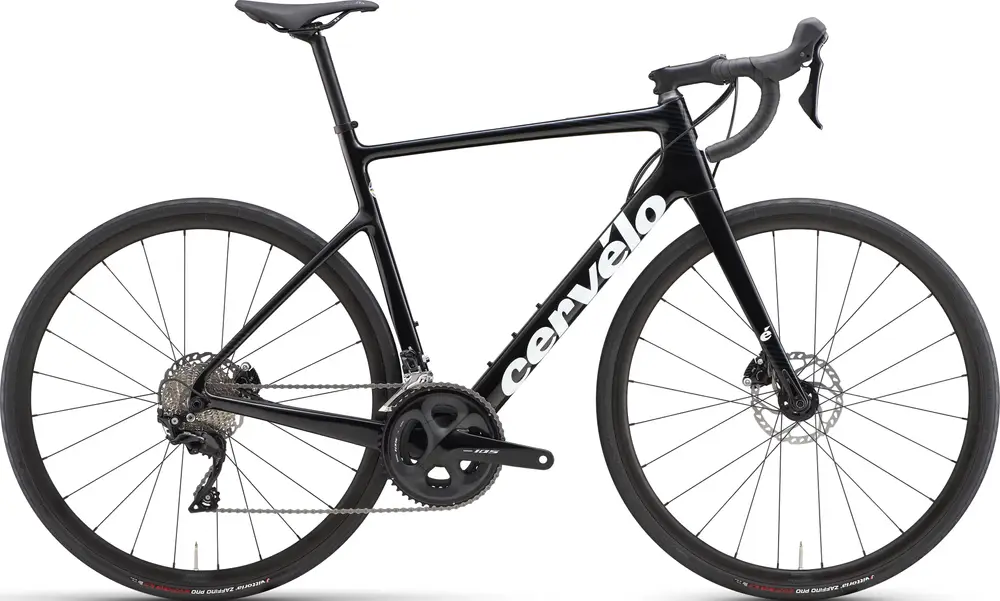
Cervélo Caledonia 105 is more than 4 times the price of Trek 1.1.
Cervélo Caledonia 105 starts from the tube shape, all the way to the design of aerodynamics, high stiffness, lightweight, etc., to meet the performance requirements of a competition-level road car.
In the eyes of our testers, the Cervélo Caledonia 105 is the nobility of road bikes.
Cervélo Caledonia 105’s internal cable routing solution, split spacers, U-shaped fork steerer, and other designs have been further optimized.
Not only is the system simple and beautiful, but it is also much lighter (save 200 grams) and meets the rider’s requirements for the fit range.
This simplicity is also far more than just aesthetics—it even affects how fast it rides, as nothing interferes with the airflow in the front end.
The Cervélo Caledonia 105 seat tube is cut to better wrap the rear wheel and effectively reduce wind resistance. Di2 fully internal routing handlebar design; shared with the s-series of the broken tube design, these are for the Cervélo Caledonia 105 ride aero performance considerations. Wow, really versatile.
Cervélo Caledonia 105 chainstays are designed to move down to effectively improve compliance. With a larger stack height and a shorter reach, the geometry is more relaxed.
In addition, the Cervélo Caledonia 105 uses Vittoria Zaffiro Pro V Folding G2.0 30c tires with a maximum tire size of 34 mm. These factors all add up to take into account its comfort.
Excited, our testers completely forgot about Trek 1.1’s merits and turned all their attention to the Cervélo Caledonia 105.
Comprehensive evaluation(4.4/5)
The Trek 1.1 is affordable and of good quality overall frame and components, making it a very good starter bike. Trek 1.1 shifts smoothly and easily when you get the hang of shifting. And the range of gears allows you to handle all types of hills well, even on short, steep trails.
It’s worth mentioning that you need to notice that the Trek 1.1’s fork transmits very little vibration to the handlebars, making it a lot more enjoyable to ride.
Learn more: Top 10 Best Road Bikes Under $1000 – Great Value For Money
Related Posts
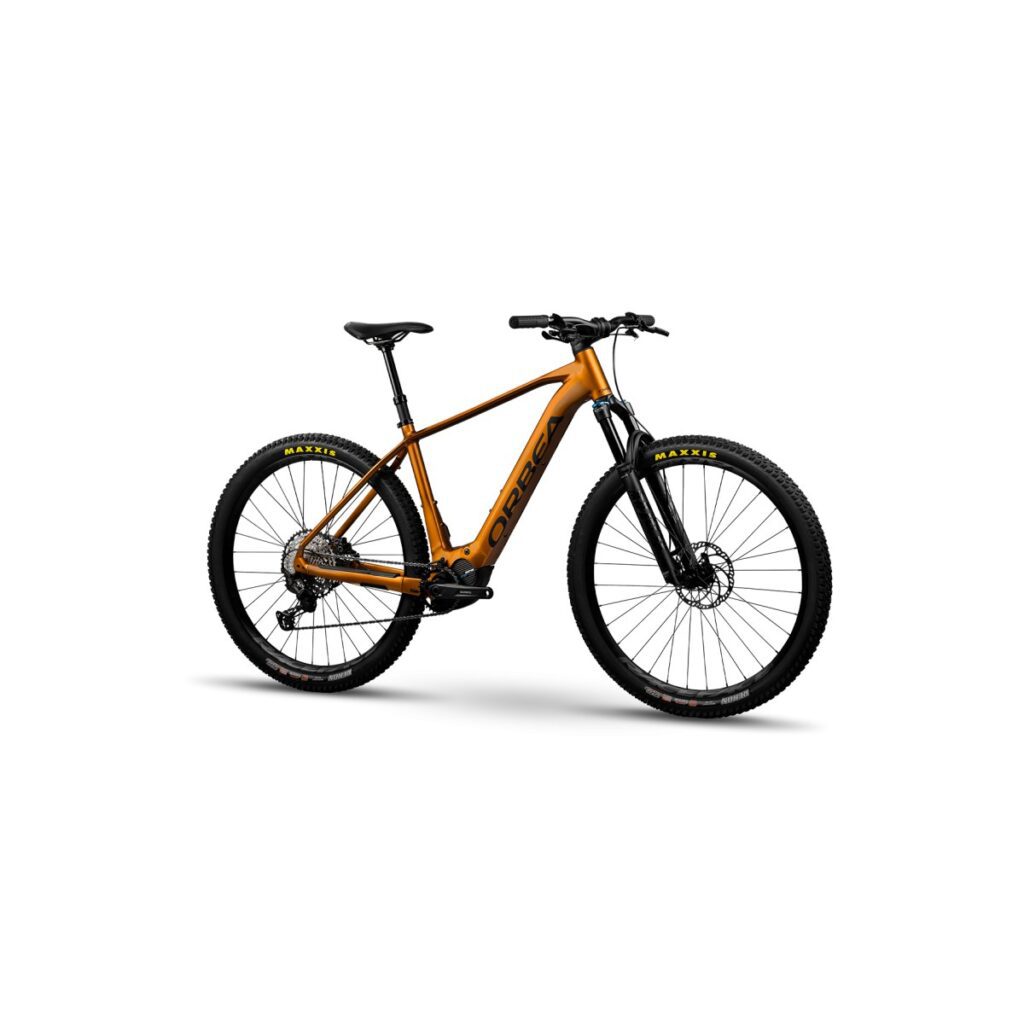

[Orbea URRUN 10 20mph Review] – Best Used By People Who Enjoy Riding To Get AFeel For The Mountains!
[schwinn admiral hybrid bicycle review] -is schwinn admiral hybrid bicycle worth buying?.

[Specialized Turbo Como 5.0 Review] – Good Choice?
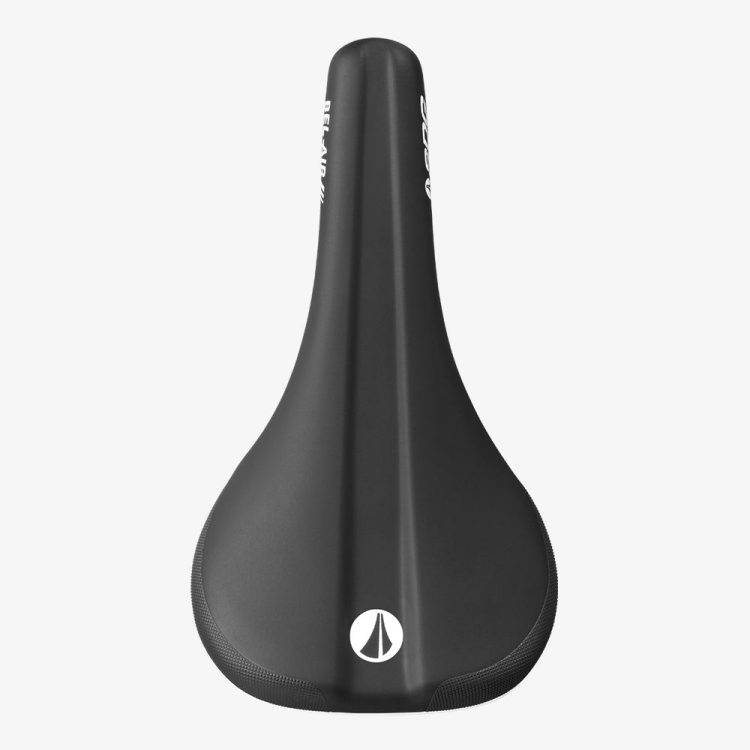
15 of The Best Mountain Bike Saddles You Can Buy
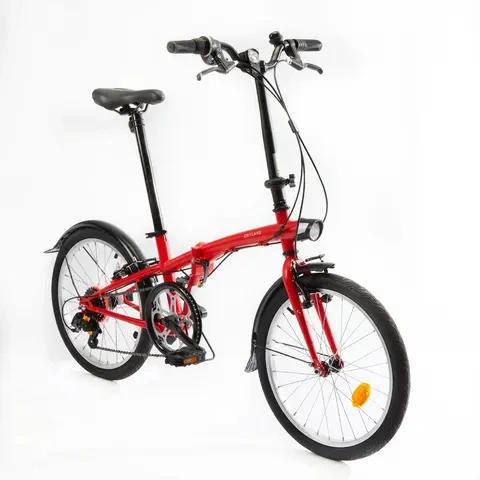
20 INCH FOLDING BIKE BTWIN 120 Review-Fold up and put in “pocket”

2023 Top 10 Best Fun Kids Bike Bells – Will This Bring Joy To Your Child’s Ride?
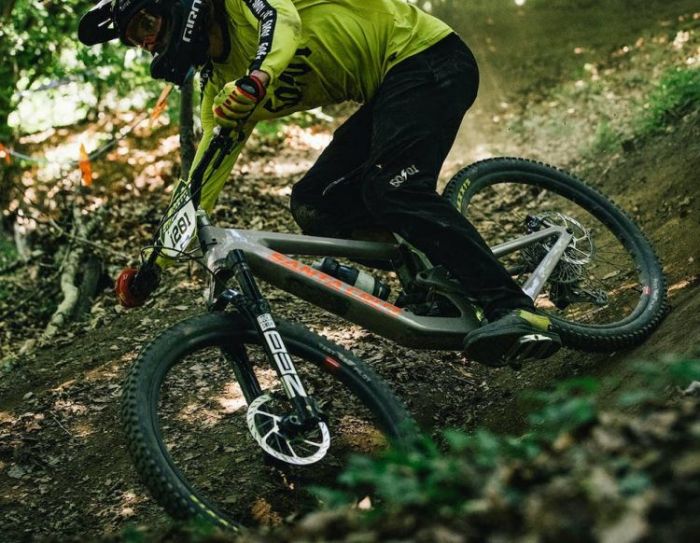
27.5 vs 29er Mountain Bikes – The Battle Of The Century

Best 20 inch Bikes For 6-13 Years Old Kids Bikes (With Gears)
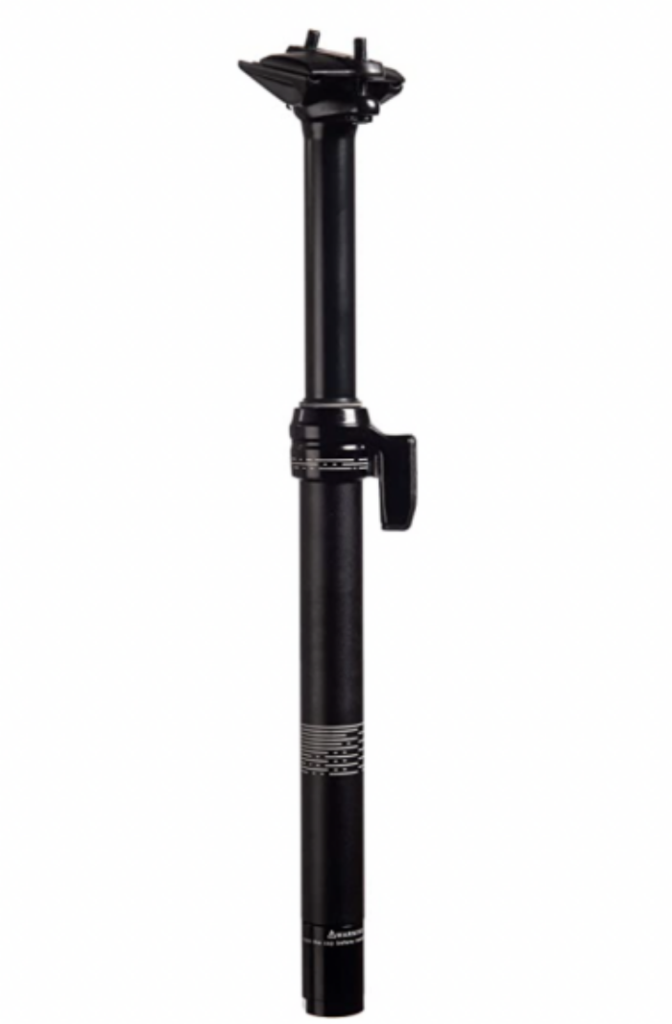
Best 27.2 Dropper Post

Best 30.9 Dropper Post In
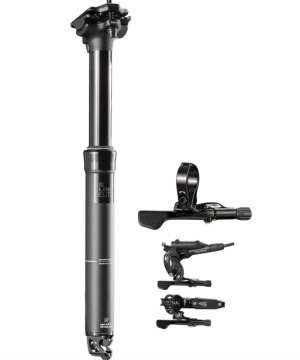
Best 31.6 Dropper Post

Best Mountain Bike Stems-Better Travel Through The Mountains And Forests
Leave a comment cancel reply.
You must be logged in to post a comment.
Justice for all.

Item added to your cart
- Open media 1 in modal
Trek Alpha 1.1 - "First Serious Road Bike"
Couldn't load pickup availability
New alloy pedals
New bar tape
Size, seat tube: 52 CM - as marked by Trek
Size, top tube: 53.5 CM, center-to-center
This bicycle has been refurbished to the Blue Tag standard which includes a 30 day warranty. For more on Coco's color coded refurb standards, click .
Coco's is a local bike shop, primarily selling local bikes. Dis-assembly, packing and shipping adds a hefty $150.
Have you checked our Instagram for the latest, greatest, best and worst?
- Choosing a selection results in a full page refresh.
- Specialized
- Bridge Bikeworks
- Brooklyn Bicycle Co.
- Bunch Bikes
- CYCLE OF GOOD
- DALLINGRIDGE
- Diamondback
- Eddy Merckx
- Electric Bike Company
- EVO Bicycles
- Fahrradmanufaktur
- Flyer by Radio Flyer
- iGO Electric
- Intense 951
- JupiterBike
- Lectric eBikes
- LeMond Bicycles
- Lightweight
- View all brands
- Pivot Cycles
- Qualisports
- Quintana Roo
- Rad Power Bikes
- Raleigh Electric
- Riese & Müller
- Rocky Mountain
- Schindelhauer
- State Bicycle Co.
- Surface 604
- Urban Arrow
- Van Nicholas
- VELO DE VILLE
- Vintage Electric
- Yeti Cycles
- YT Industries

Trek 1.1 C H2
- AUS $ NZD $ USD $ CAD $ GBP £ EUR €
At a glance
Trek’s 1.1 is a great choice for road riding fun. It boasts Trek’s light, nimble-handling Alpha aluminum frame that has a slightly higher front end and elevated handlebars for comfort. To make the most of that increased comfort, this sweet road machine is equipped with easy-rolling Bontrager wheels and tires, powerful dual-pivot brakes for confidence and control, and a 16-speed drivetrain with a wide-range crankset for flying up the climbs. You’ll also appreciate the Bontrager saddle, bars, stem, and bar tape— touchpoints that balance performance and comfort.
Where To Buy

Specifications
- Frame 100 Series Alpha Aluminum, rack and fender mounts
- Hubs Bontrager alloy
- Chain SunRace CNM84
- Crank Vuelta Corsa
- Bottom Bracket Sealed cartridge, English thread
- Front Derailleur Shimano Claris
- Rear Derailleur Shimano Claris
- Shifters Shimano Claris
- Brakeset Alloy dual-pivot
- Handlebar Bontrager Race VR-C, 31.8mm
- Saddle Bontrager Montrose Comp
- Seatpost Bontrager SSR, 2-bolt head, 27.2mm, 12mm offset
- Stem Bontrager Elite, 7 degree, w/computer & light mounts
- Grips Bontrager Microfiber tape
- Headset 1-1/8-inch integrated, semi-cartridge bearings
Q: How much is a 2017 Trek 1.1 C H2?
A 2017 Trek 1.1 C H2 is typically priced around $770 USD when new. Be sure to shop around for the best price, and also look to the used market for a great deal.
Q: What size 2017 Trek 1.1 C H2 should I get?
No comments on this bike yet. Why not be the first?
Leave a Reply Cancel reply
Your email address will not be published. Required fields are marked *
Want more road bikes in your mailbox?
The latest on road bikes delivered straight to your mailbox.

More General Bikes View All

Fuji Sportif 2.1
- The Sportif is designed for versatility and performance. Taking geometry cues from our top-level endurance bike, the Gran Fondo, the Sportif’s longer wheelbase and taller headtube position the rider…

Bianchi Specialissima Super Record
Bianchi’s Specialissima is a game-changer for the ultralight bike category. With NASA-developed Countervail technology, the Specialissima delivers a 780-gram frame that boasts an unparalleled ride quality, climbs like a rocket,…

Kona Roadhouse
The Roadhouse is Kona’s flagship Reynolds 853 road bike, combining the lively ride characteristics and aesthetics of classic steel bikes with the all the details you’d expect from a modern…
Deals View All
View all deals, recent posts view all.

What is Road Bike Database?
Whether you're a seasoned cyclist or just starting out, choosing the right road bike can…
Send Feedback
Have a suggestion? Looking for a bike that's not on Road Bike Database? Or perhaps you've spotted an error?
We'd love to hear from you. Let us know with the form below.
This website uses cookies to ensure you get the best experience possible. Learn more.
About Road Bike Database
Explore, search and compare thousands of the world’s best road bikes here on Road Bike Database.
Compare prices, components, reviews, images and more on current and past road bikes. You can even share reviews, comments and questions on road bikes. View and compare a huge selection of bikes from brands such as Cervélo , BMC , Trek , Specialized and more .
We strive to provide accurate and up-to-date information for road bikes on Road Bike Database. If you’ve spotted any issues, please let us know . We also include helpful tools, such as our frame size calculator, to assist you in choosing the right road bike. Bear in mind that these tools serve as a guide and simply provide a general indication. Refer to information provided by your bike manufacturer for the most applicable information for your bike.
Bikes By Brand
Bikes by year, bikes by riding style.
- Electric Road
- folding-bike
- general-road
- general-urban
- long-tail-cargo
Bikes By Wheel Size
Popular bikes.
- 2022 Bergamont E-Horizon Elite Belt Amsterdam
- 2023 Kellys ESTIMA 10 SH 504Wh
- 2023 Tern Link D7i
- 2023 Rose MULTISTREET 3 MidStep
- 2022 ARC8 Escapee DB DURA ACE DI2
- 2023 Riese & Müller Supercharger GT vario HS
- 2022 Garneau Urbania 3
Latest Bikes
- 2024 Riese & Müller Delite4 GT touring
- 2024 Riese & Müller Delite4 GT rohloff
- 2024 Riese & Müller Delite4 GT rohloff HS
- 2024 Riese & Müller Delite4 GT vario HS
- 2024 Riese & Müller Delite4 GT vario
- 2024 Riese & Müller Delite4 GT touring HS
- 2024 Riese & Müller Roadster4 Mixte vario HS

- Rider Notes
2013 Trek 1.1 H2 (Compact)

An aluminum frame race bike with mid-range components and rim brakes.
For This Bike
View more similar bikes →
A bike with lower gearing will be easier to ride up steep hills, while a higher top end means it will pedal faster down hills.
1.1 H2 (Compact)
Similar Bikes
(descending)
Add custom gearing
151cm – 159cm
156cm – 164cm
161cm – 169cm
166cm – 175cm
172cm – 181cm
178cm – 186cm
183cm – 191cm
188cm – 195cm
🐐 Estimated
- 191cm, size 62cm, Just right

Last updated 29 June Not listed for 2,473 days
Accessories

IMAGES
VIDEO
COMMENTS
Made from 2011 - 2017, the Trek Alpha 1.1 sought to attract a new generation of riders to the love of cycling. The Alpha was the least expensive of the Trek lineup, which helped it achieve a reputation for being a great value. The bike was known for being lightweight, fast, and very durable. Battling years of negative press, Trek Bicycle ...
See the bike and visit your local Trek retailer. Shop now! Discover your next great ride with 1.1. See the bike and visit your local Trek retailer. ... Specs; Frameset. Frame 100 Series Alpha Aluminum, fender & rack compatible. Frame fit H2. Fork Trek carbon road; Wheels. ... 1-1/8" semi-cartridge bearings. Brakeset Alloy dual-pivot; Weight ...
View product specifications: Trek 1.1 2012 - View Reviews, Specifications, Prices, Comparisons and Local Bike Shops. ... 100 Series Alpha Aluminum: Front derailleur: Shimano 2300, 34.9mm clamp: Headset: 1-1/8" semi-cartridge bearings: Hub front: Alloy Hub: Hub rear: Alloy Hub: Pedals: Nylon body w/alloy cage: Rear derailleur:
View product specifications: Trek 1.1 2015 - View Reviews, Specifications, Prices, Comparisons and Local Bike Shops. ... Trek carbon road: Frame type: 100 Series Alpha Aluminum: ... 1-1/8" semi-cartridge bearings: Hub front: Bontrager alloy: Hub rear: Bontrager alloy: Pedals: Nylon body w/alloy cage, toe-clip/strap: Rear derailleur: Shimano Claris:
The frame itself is made from 100 series Alpha Aluminium, which happily brings a balance between comfort and weight. ... This size and stability does mean that the Trek 1.1 comes with a weight ...
The Trek 1.1 is Trek's bottom rung road bike, but that doesn't mean budget ride quality ... Brakes could be better. Read Review. Geometry. Specs. Build. Frame: 100 Series Alpha Aluminum, fender & rack compatible. Fork: Trek carbon road. Bottom Bracket: Sealed cartridge. Headset: 1-1/8" integrated, semi-cartridge bearings. Stem: Bontrager Elite ...
Trek 1.1 review - BikeRadar
Comprehensive evaluation (4.4/5) The Trek 1.1 is affordable and of good quality overall frame and components, making it a very good starter bike. Trek 1.1 shifts smoothly and easily when you get the hang of shifting. And the range of gears allows you to handle all types of hills well, even on short, steep trails.
An aluminum frame race bike with mid-range components and rim brakes.
View product specifications: Trek 1.1 2013 - View Reviews, Specifications, Prices, Comparisons and Local Bike Shops. ... 100 Series Alpha Aluminum: Front derailleur: Shimano 2300, 34.9mm clamp: Headset: 1-1/8" semi-cartridge bearings: Hub front: alloy: Hub rear: alloy: Pedals: Nylon body w/alloy cage: Rear derailleur:
Weight. Weight. 56cm - 9.96 kg / 21.96 lbs. Weight limit. This bike has a maximum total weight limit (combined weight of bicycle, rider, and cargo) of 275 pounds (125 kg). We reserve the right to make changes to the product information contained on this site at any time without notice, including with respect to equipment, specifications, models ...
Trek Alpha 1.1 - "First Serious Road Bike". $490.00 USD. 4 interest-free installments, or from $44.23/mo with. Check your purchasing power. Quantity. Sold out. Share. Trek Alpha 1.1, great entry level "first serious bike" that has been gone through with a new Blackburn saddle, VP pedals, Soma tires, bar tape, et al Marked as a 52 CM, measures ...
The Trek 1.1 is Trek's bottom rung road bike, but that doesn't mean budget ride quality. Highs. ... Lows. Heavy. Brakes could be better. Read Review. Specs. Build. Frame: 100 Series Alpha Aluminum, fender & rack compatible. Fork: Trek carbon road. Headset: 1-1/8" semi-cartridge bearings. Stem: Bontrager Elite, 31.8mm, 7 degree, w/Blendr ...
The 2017 Trek 1.1 C H2 is an General aluminium road bike. It is priced at $770 USD and a shimano drivetrain. The bike is part of Trek 's 1.1 C H2 range of road bikes. Trek's 1.1 is a great choice for road riding fun. It boasts Trek's light, nimble-handling Alpha aluminum frame that has a slightly higher front end and elevated handlebars for ...
See the bike and visit your local Trek retailer. Shop now! Discover your next great ride with 1.1. See the bike and visit your local Trek retailer. ... Specs; Frameset. Frame 100 Series Alpha Aluminum, fender & rack compatible. Frame fit H2. Fork Trek carbon road; Wheels. ... 1-1/8" semi-cartridge bearings. Brake set Alloy dual-pivot; Weight ...
Weight. 56cm - 9.96 kg / 21.96 lbs. Weight limit. This bike has a maximum total weight limit (combined weight of bicycle, rider and cargo) of 125 kg (275 lb). We reserve the right to make changes to the product information contained on this site at any time without notice, including with respect to equipment, specifications, models, colours ...
2013 Trek. 1.1 H2 (Compact) An aluminum frame race bike with mid-range components and rim brakes. Frame: ... Specs. Build. Frame: 100 Series Alpha Aluminum ... Fork: Trek aluminum road. Headset: 1-1/8" semi-cartridge bearings. Stem: Bontrager Sport, 26.0mm, 10 degree. Handlebar: Bontrager SSR VR-C, 26.0mm. Saddle: Bontrager Affinity 1, steel rails.
Find out how much a 2017 Trek 1.1 bicycle is worth. Our Value Guide is constantly growing with pricing information and bicycle specs daily.
Details. The 1.1 is Trek's entry level aluminum road bike. This smooth rolling machine performs like a champ, but at a price that's easy to live with. The 1.1 features a lightweight aluminum frame and a carbon fork. Shimano's economical Claris components take care of shifting tasks, and parts from Vuelta and Sunrace add performance and value.
View product specifications: Trek 1.1 2014 - View Reviews, Specifications, Prices, Comparisons and Local Bike Shops. ... Trek carbon road: Frame type: 100 Series Alpha Aluminum: Front derailleur: Shimano Claris: Headset: 1-1/8" semi-cartridge bearings: Hub front: Alloy : Hub rear: Alloy : Pedals: Nylon body w/alloy cage:
See the bike and visit your local Trek retailer. Shop now! Discover your next great ride with 2.1. See the bike and visit your local Trek retailer. ... Specs; Frameset. Frame Alpha Black Aluminum. Frame fit H2. Fork Bontrager Race, carbon legs, SpeedTrap compatible; Wheels. ... 1-1/8" integrated, semi-cartridge bearings. Brakeset Tektro R540 ...